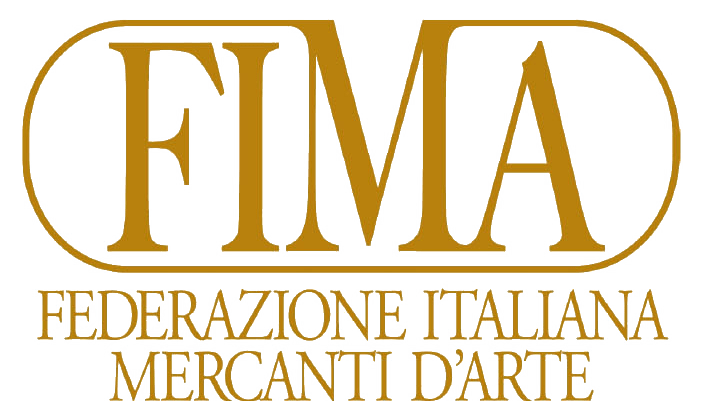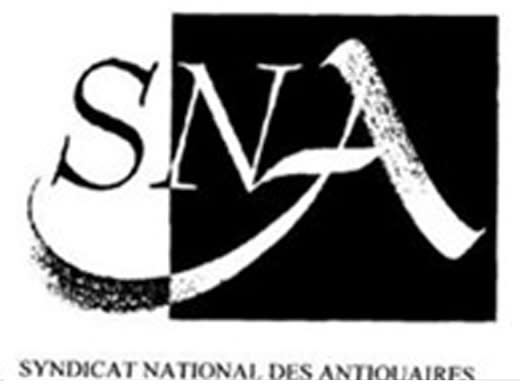Pietro Tenerani
Genio della Caccia (Genius of Hunting) and Genio della Pesca (Genius of Fishing)
white marble, on later painted wood plinths
Genio della Caccia: 91cm., 35¾in.
Genio della Pesca: 83.5cm., 32⅞in.
plinths: 94.5cm., 37¼in.
Genio della Pesca: 83.5cm., 32⅞in.
plinths: 94.5cm., 37¼in.
Genio della Caccia signed: PIETRO TENERANI F.
Genio della Pesca signed: P. TENERANI
Genio della Pesca signed: P. TENERANI
The prolific 19th-century Neoclassical sculptor, Pietro Tenerani, initially trained in the Carrara based workshop of his uncle Pietro Marchetti (1766-1846). In 1813, the young Tenerani travelled to Rome and joined...
The prolific 19th-century Neoclassical sculptor, Pietro Tenerani, initially trained in the Carrara based workshop of his uncle Pietro Marchetti (1766-1846). In 1813, the young Tenerani travelled to Rome and joined the esteemed workshop of Bertel Thorvaldsen (1770-1844), where he developed a refined Neoclassical style. After he completed his training, Tenerani rapidly grew an international client base of illustrious patrons, who amongst others included the Duke of Devonshire William Cavendish, Prince Ludwig of Bavaria, and Queen Victoria. In addition, he developed close ties with the papal courts of Rome, receiving important pious commissions including the Tomb of Pope Pius VIII and a colossal statue of Saint Alfonso de Liguori for the Vatican.
Imbued with natural realism and exquisite detail, this charming pair of putti or ‘Geniuses’, one personifying Hunting and the other Fishing, were considered masterworks from the moment they were completed. The first marble models of the pair were finished in 1824 and purchased almost immediately from Tenerani’s studio by Prince Tomasso Corsini, and are now in the Palazzo Corsini, Rome (inv. nos. 664 and 665). Thus, the cherubs were much desired by distinguished international patrons resulting in many reproductions, including the present pair which were made for the French General and politician Auguste Bertin de Vaux (1799-1879). According to the biographer Oreste Raggi (1812-1882), it was only the plaster models that remained in Tenerani’s studio as the marble sculptures would be swooped away by his clients as soon as they were finished (op. cit. Raggi, p.138). The allegories of Hunting and Fishing were also acquired by Carl Mayer von Rothschild, who commissioned a second pair of putti, the Genius of Agriculture and of Commerce, relating to his occupation of banking. Even though this pair was produced 17 years later, they seamlessly matched the level of execution and style of the Genius of Hunting and of Fishing.
The near identical execution of the present putti in comparison to the original pair in the Palazzo Corsini, demonstrate Tenerani’s consistent carving. While the marbles are Neoclassical in style, these figures evoke a certain sentimentality and contrasting temperament; the Genius of Hunting shows a confident expression with soft smile, standing tall with his left foot stepping forwards. Whereas, the Genius of Fishing has a more focussed and serious look, concentrating on extracting the fish from his net. Their main attributes, including the fine fishing net and dead hare, are partly dragged onto their integral bases, which enhance the well-liked emotional realism of these fine marble figures. The level of detail of both figures is extraordinary: their finely curled or waving hair, feathered wings, and realistic rounded child’s physique are particularly noteworthy.
Imbued with natural realism and exquisite detail, this charming pair of putti or ‘Geniuses’, one personifying Hunting and the other Fishing, were considered masterworks from the moment they were completed. The first marble models of the pair were finished in 1824 and purchased almost immediately from Tenerani’s studio by Prince Tomasso Corsini, and are now in the Palazzo Corsini, Rome (inv. nos. 664 and 665). Thus, the cherubs were much desired by distinguished international patrons resulting in many reproductions, including the present pair which were made for the French General and politician Auguste Bertin de Vaux (1799-1879). According to the biographer Oreste Raggi (1812-1882), it was only the plaster models that remained in Tenerani’s studio as the marble sculptures would be swooped away by his clients as soon as they were finished (op. cit. Raggi, p.138). The allegories of Hunting and Fishing were also acquired by Carl Mayer von Rothschild, who commissioned a second pair of putti, the Genius of Agriculture and of Commerce, relating to his occupation of banking. Even though this pair was produced 17 years later, they seamlessly matched the level of execution and style of the Genius of Hunting and of Fishing.
The near identical execution of the present putti in comparison to the original pair in the Palazzo Corsini, demonstrate Tenerani’s consistent carving. While the marbles are Neoclassical in style, these figures evoke a certain sentimentality and contrasting temperament; the Genius of Hunting shows a confident expression with soft smile, standing tall with his left foot stepping forwards. Whereas, the Genius of Fishing has a more focussed and serious look, concentrating on extracting the fish from his net. Their main attributes, including the fine fishing net and dead hare, are partly dragged onto their integral bases, which enhance the well-liked emotional realism of these fine marble figures. The level of detail of both figures is extraordinary: their finely curled or waving hair, feathered wings, and realistic rounded child’s physique are particularly noteworthy.
Provenance
Auguste François Bertin de Vaux (1799-1879), Château de Villepreux, Beychac-et-Caillau, FranceLiterature
RELATED LITERATUREO. Raggi, Della vita e delle opere di Pietro Tenerani: del suo tempo e della sua scuola nells scultura, Firenze, 1880, pp.38-40, 137-141; A. Panzetta, Nuovo Dizionario Degli Scultori Italiani Dell’Ottocento e Del Primo Novecento, Turin, 2003, pp. 903, 925, fig. 1827; S. Grandesso, Pietro Tenerani (1789-1869), Milan, 2003, pp. 84-91, figs. 69, 70
26
di
30
Join our mailing list
* denotes required fields
We will process the personal data you have supplied in accordance with our privacy policy (available on request). You can unsubscribe or change your preferences at any time by clicking the link in our emails.



